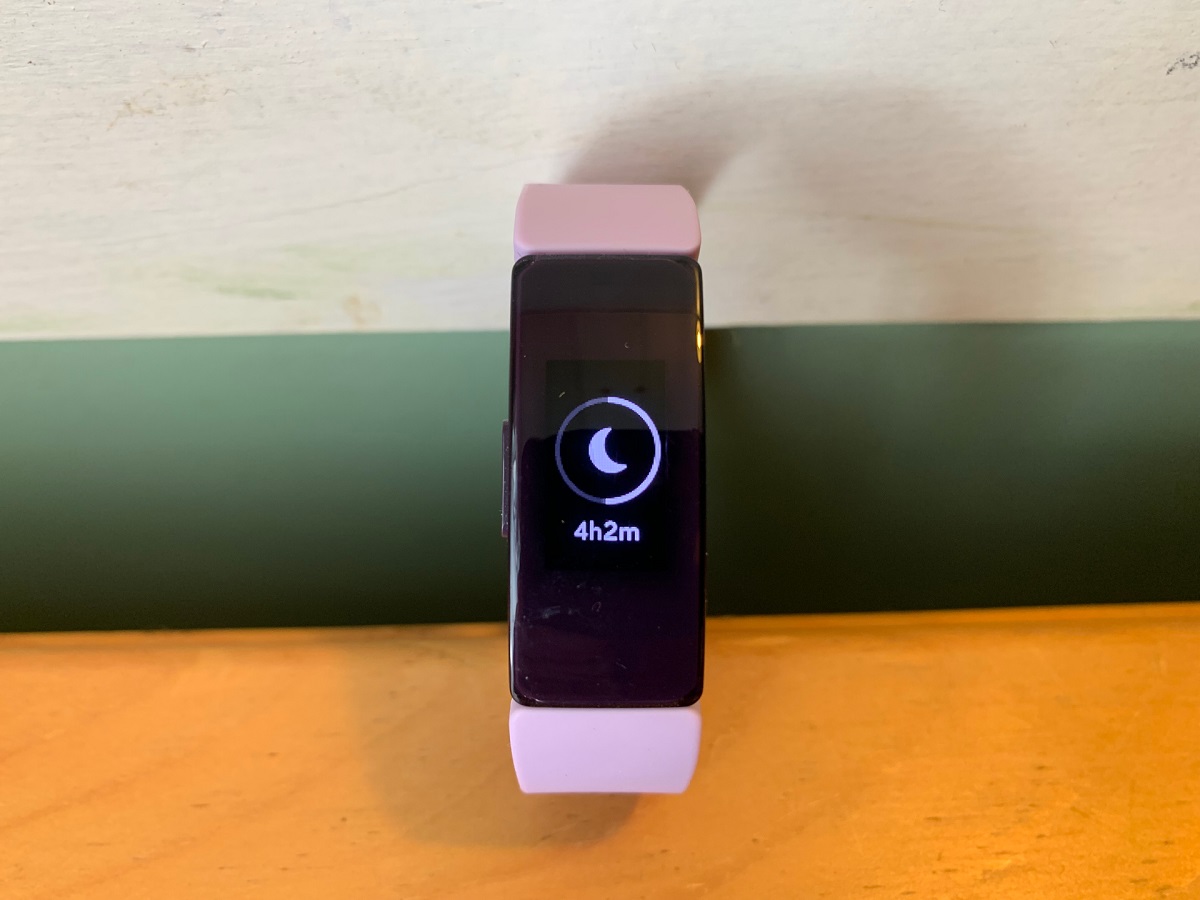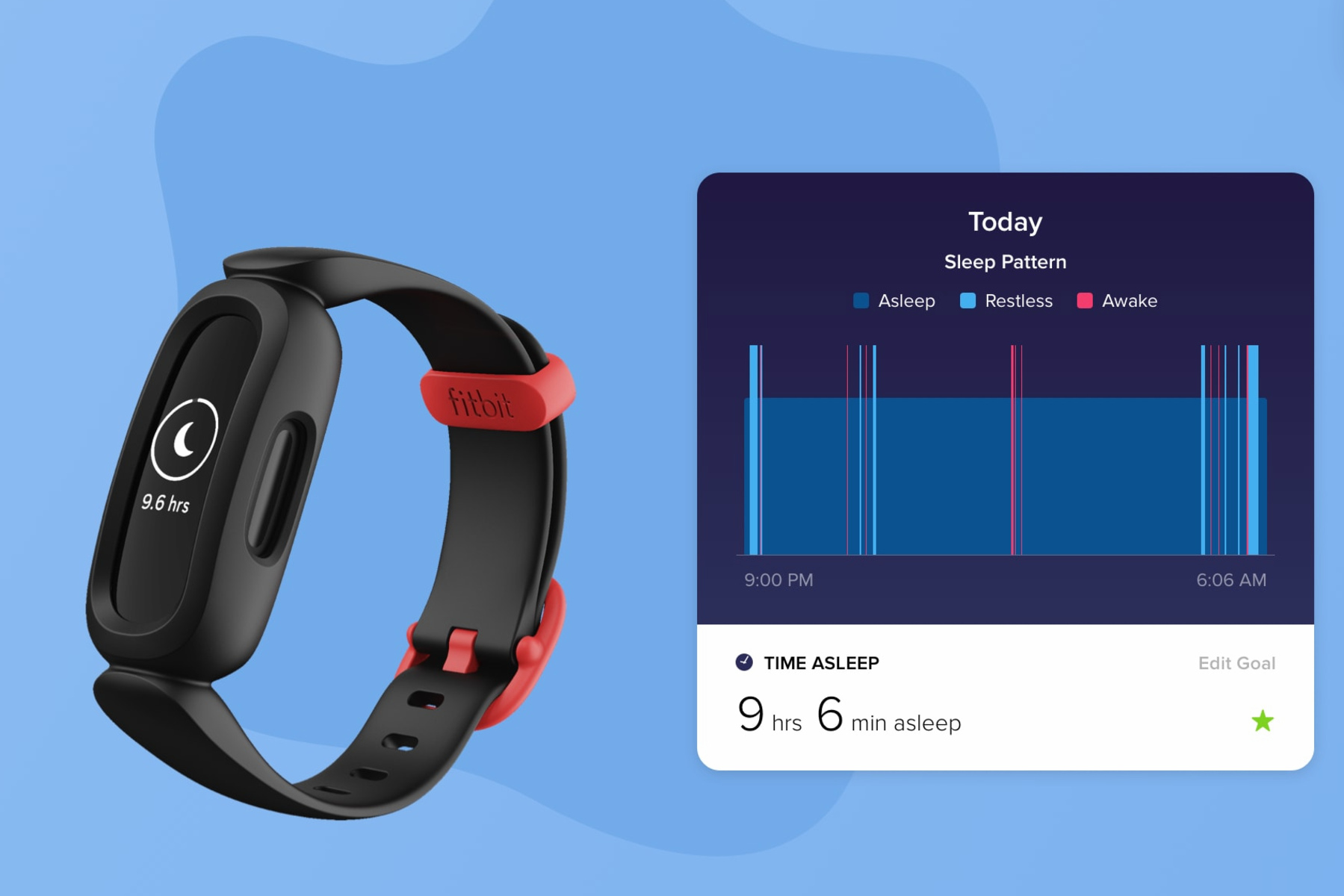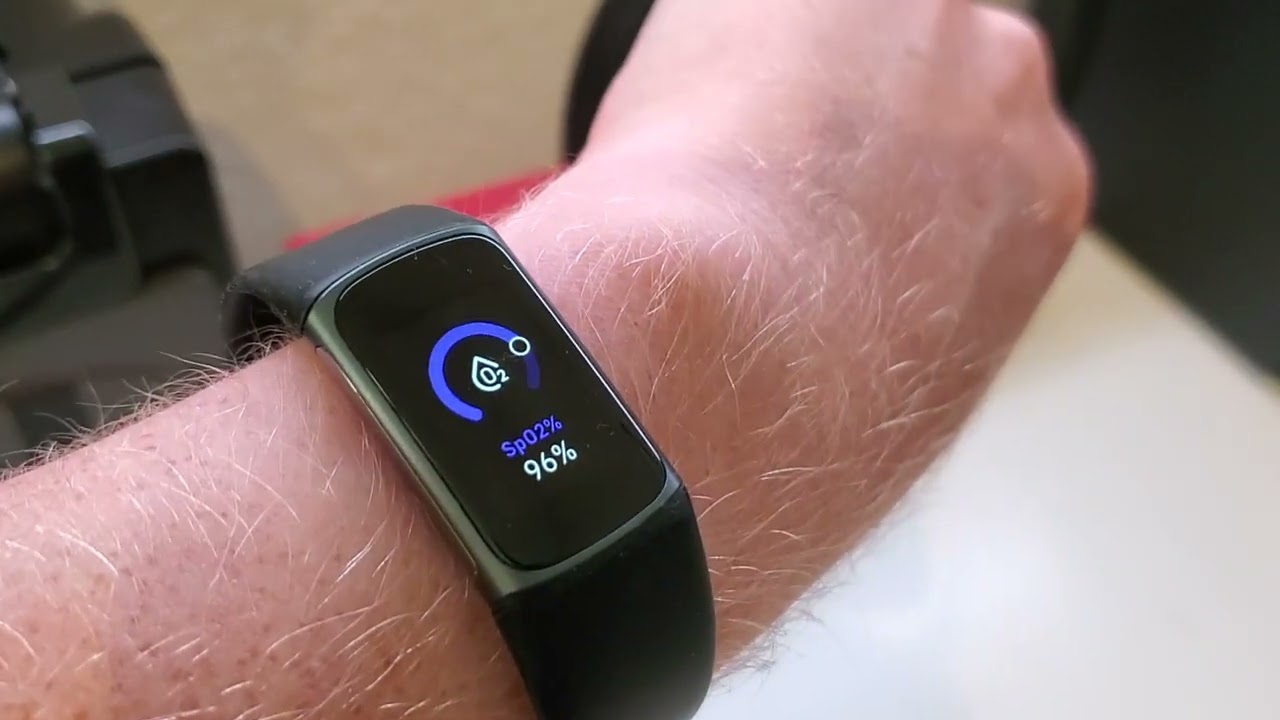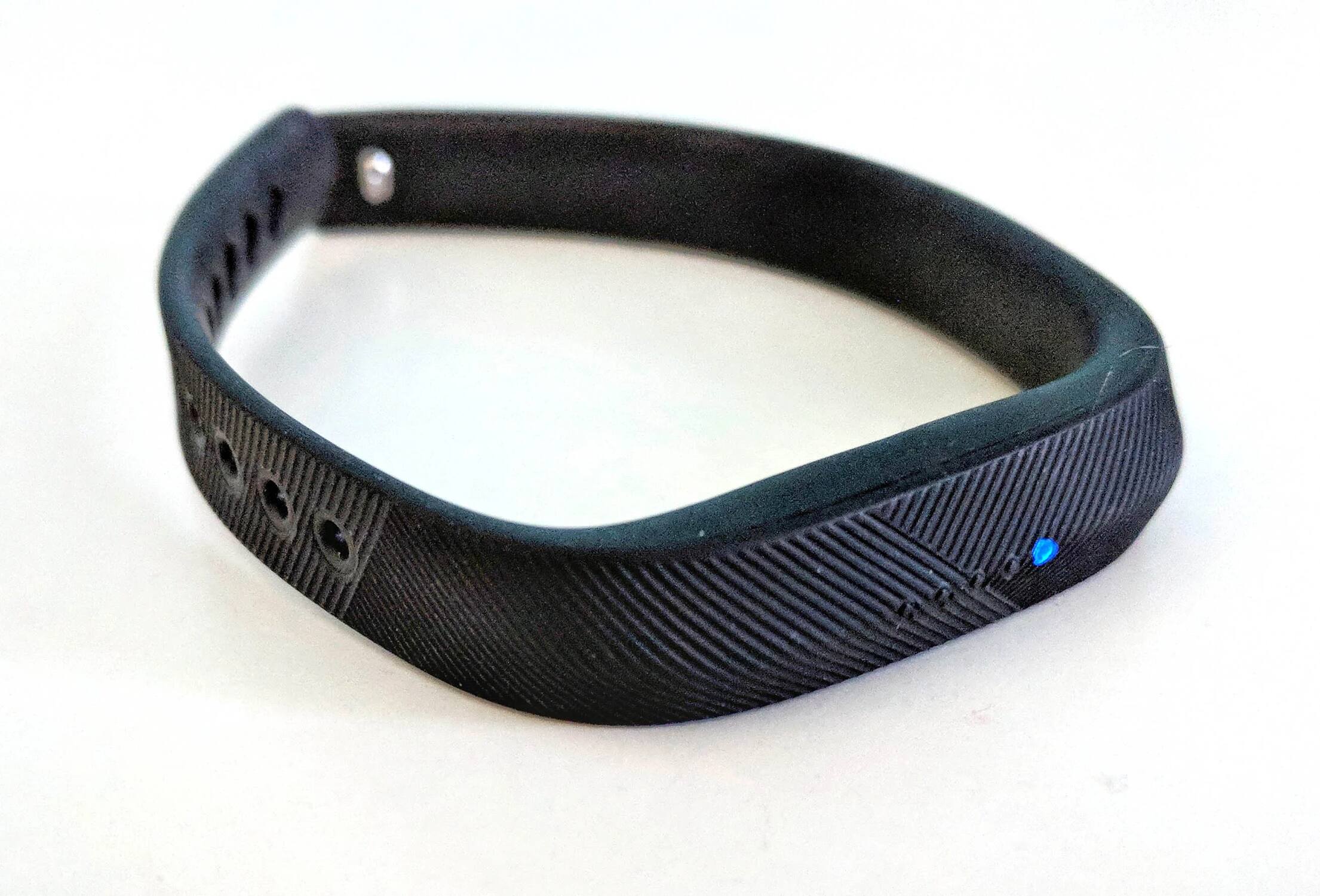Introduction
Sleep is an essential component of overall well-being, playing a pivotal role in maintaining physical health, mental acuity, and emotional balance. As we delve into the intricate realm of sleep, it becomes evident that understanding the patterns and quality of our sleep is crucial for optimizing our daily performance and long-term health.
In today's fast-paced world, where the prevalence of sleep disorders and disturbances is on the rise, it has become increasingly important to comprehend the fundamental aspects of sleep. From the rejuvenating power of a good night's sleep to the detrimental effects of sleep deprivation, the impact of sleep on our lives cannot be overstated.
Moreover, with the advent of advanced wearable technology, such as Fitbit, individuals now have the ability to gain unprecedented insights into their sleep patterns. This invaluable information empowers users to make informed decisions about their lifestyle, ultimately leading to improved sleep quality and overall well-being.
In this comprehensive guide, we will explore the intricacies of sleep, shedding light on the stages of sleep, the influence of the circadian rhythm, factors affecting sleep patterns, and the innovative methods employed by Fitbit to track and analyze sleep. Additionally, we will provide practical tips for enhancing sleep quality, enabling you to harness the full potential of your restorative slumber.
Embark on this enlightening journey with us as we unravel the mysteries of sleep and discover how Fitbit can revolutionize the way we understand and optimize our sleep patterns.
The Stages of Sleep
Sleep is a complex and dynamic process that consists of distinct stages, each with its own unique characteristics and physiological functions. These stages are categorized into two main types: rapid eye movement (REM) sleep and non-rapid eye movement (NREM) sleep. Understanding these stages is essential for comprehending the intricacies of the sleep cycle and its impact on overall well-being.
Non-Rapid Eye Movement (NREM) Sleep
NREM sleep is further divided into three stages: N1, N2, and N3.
-
N1 (Light Sleep): This initial stage marks the transition from wakefulness to sleep. It is characterized by slowed eye movements and reduced muscle activity. Individuals in this stage may experience fleeting thoughts or images resembling daydreams.
-
N2 (True Sleep): As the body delves deeper into relaxation, brain waves become slower with occasional bursts of rapid brain activity known as sleep spindles. During this stage, the body temperature and heart rate decrease, preparing the individual for deeper sleep.
-
N3 (Deep Sleep): Also known as slow-wave sleep, this stage is crucial for physical restoration and growth. Deep sleep is characterized by slow brain waves, relaxed muscles, and an increased secretion of growth hormones. It is during this stage that the body repairs and regenerates tissues, strengthens the immune system, and consolidates memories.
Rapid Eye Movement (REM) Sleep
REM sleep is the stage in which most dreaming occurs. It is distinguished by rapid eye movements, heightened brain activity, and temporary paralysis of the muscles, preventing individuals from acting out their dreams. During REM sleep, the brain processes and consolidates emotions and memories, contributing to cognitive function and emotional well-being.
The sleep cycle typically progresses through these stages multiple times throughout the night, with the duration of each stage varying across different age groups. By comprehending the intricacies of these sleep stages, individuals can gain valuable insights into their sleep patterns and make informed decisions to optimize their sleep quality and overall health.
The Circadian Rhythm
The circadian rhythm, often referred to as the body's internal clock, is a natural, 24-hour cycle that regulates various physiological processes, including the sleep-wake cycle, hormone production, body temperature, and metabolism. This intrinsic rhythm is orchestrated by the suprachiasmatic nucleus in the brain, which responds to external cues such as light and darkness to synchronize the body's internal functions with the external environment.
The circadian rhythm plays a pivotal role in determining the timing of sleep and wakefulness, influencing the quality and duration of our rest. When this internal clock is in sync with our daily activities, it promotes optimal physical and mental performance. However, disruptions to the circadian rhythm, such as irregular sleep schedules or shift work, can lead to sleep disturbances and a myriad of health issues.
Furthermore, the circadian rhythm influences the release of hormones, such as melatonin, which is integral to the sleep-wake cycle. Melatonin, often referred to as the "sleep hormone," is produced in response to darkness, signaling the body that it is time to wind down and prepare for sleep. Understanding the interplay between the circadian rhythm and melatonin production is crucial for optimizing sleep patterns and overall well-being.
In today's modern society, where artificial lighting and electronic devices are omnipresent, the natural synchronization of the circadian rhythm can be disrupted. Prolonged exposure to artificial light, especially blue light emitted by screens, can suppress melatonin production, leading to difficulties in falling asleep and achieving restorative sleep.
By harnessing the knowledge of the circadian rhythm, individuals can implement strategies to align their daily routines with their natural biological clock. This may involve establishing consistent sleep and wake times, minimizing exposure to artificial light before bedtime, and creating a sleep-conducive environment. Additionally, leveraging wearable technology, such as Fitbit, to track sleep patterns and receive personalized insights can aid in optimizing the circadian rhythm and enhancing overall sleep quality.
In essence, the circadian rhythm serves as a fundamental pillar of our sleep architecture, influencing the timing, duration, and quality of our sleep. By attuning ourselves to the innate rhythms of our body, we can cultivate a harmonious relationship with sleep, fostering vitality and well-being in our daily lives.
Factors Affecting Sleep Patterns
Several factors can significantly impact an individual's sleep patterns, influencing the duration, quality, and overall restorative nature of their sleep. Understanding these factors is crucial for identifying potential disruptions to sleep and implementing targeted strategies to optimize sleep quality. Here are the key elements that can affect sleep patterns:
-
Stress and Anxiety: Psychological factors, such as stress and anxiety, can profoundly impact sleep patterns. Heightened stress levels can lead to racing thoughts, making it difficult to unwind and fall asleep. Moreover, anxiety can manifest as restlessness during sleep, causing frequent awakenings and overall sleep fragmentation.
-
Environmental Factors: The sleep environment plays a pivotal role in shaping sleep patterns. Noise pollution, excessive light exposure, uncomfortable temperatures, and an uncomfortable mattress or pillow can disrupt the continuity and quality of sleep. Creating a conducive sleep environment by minimizing noise, controlling light exposure, and optimizing room temperature can significantly enhance sleep quality.
-
Lifestyle Choices: Certain lifestyle choices, such as irregular sleep schedules, excessive caffeine consumption, and lack of physical activity, can detrimentally impact sleep patterns. Irregular sleep schedules, including shift work and jet lag, can disrupt the circadian rhythm, leading to sleep disturbances. Additionally, consuming stimulants like caffeine close to bedtime can interfere with the ability to fall asleep and achieve restful sleep.
-
Technology and Screen Time: Prolonged exposure to electronic devices, particularly those emitting blue light, can hinder the body's natural production of melatonin, the hormone essential for sleep regulation. The use of smartphones, tablets, and computers before bedtime can delay the onset of sleep and compromise sleep quality.
-
Diet and Nutrition: Dietary habits can influence sleep patterns, with certain foods and eating patterns affecting the quality of sleep. Consuming heavy meals close to bedtime, excessive alcohol intake, and high sugar intake can disrupt the digestive system and lead to discomfort during sleep. Conversely, incorporating sleep-promoting nutrients, such as magnesium and tryptophan, into the diet can support relaxation and improve sleep quality.
-
Medical Conditions: Various medical conditions, including sleep disorders, chronic pain, respiratory problems, and hormonal imbalances, can significantly impact sleep patterns. Identifying and addressing underlying medical conditions is essential for restoring healthy sleep patterns and overall well-being.
By recognizing and addressing these factors, individuals can take proactive steps to optimize their sleep patterns and cultivate a restorative and rejuvenating sleep experience. Leveraging the insights provided by advanced wearable technology, such as Fitbit, individuals can gain a deeper understanding of how these factors influence their sleep and make informed adjustments to enhance their overall sleep quality.
In essence, by acknowledging the multifaceted nature of factors affecting sleep patterns, individuals can embark on a journey towards achieving optimal sleep quality and embracing the boundless benefits of restorative slumber.
How Fitbit Tracks Sleep
Fitbit employs advanced technology to monitor and analyze sleep patterns, providing users with comprehensive insights into their nightly rest. The process of tracking sleep begins with the utilization of sensors embedded within the Fitbit device, which continuously monitor various physiological parameters throughout the night.
One of the key metrics utilized by Fitbit to track sleep is movement. By detecting subtle movements during sleep, such as shifts in body position and periods of restlessness, Fitbit can discern the different sleep stages and overall sleep quality. This data is instrumental in identifying periods of wakefulness, light sleep, deep sleep, and rapid eye movement (REM) sleep, enabling users to gain a holistic understanding of their sleep architecture.
In addition to movement, Fitbit devices also measure heart rate variability (HRV) during sleep. HRV provides valuable insights into the body's physiological response to sleep, reflecting the interplay between the sympathetic and parasympathetic nervous systems. By analyzing HRV patterns, Fitbit can assess the overall quality of sleep, stress levels, and autonomic nervous system activity, offering users a comprehensive overview of their sleep health.
Furthermore, Fitbit leverages its proprietary algorithms to consolidate data from movement, heart rate, and other relevant parameters to generate personalized sleep insights. These insights are presented to users in a user-friendly interface, allowing them to visualize their sleep patterns, identify trends, and track changes over time. This data-driven approach empowers users to make informed decisions about their sleep habits, leading to actionable steps for improving sleep quality and overall well-being.
Moreover, the integration of sleep tracking with the broader ecosystem of Fitbit's wellness platform enables users to correlate their sleep patterns with other health metrics, such as physical activity, nutrition, and stress levels. This holistic approach provides a comprehensive view of overall health and well-being, fostering a deeper understanding of the interconnectedness between sleep and various aspects of daily life.
By harnessing the power of advanced sensors, sophisticated algorithms, and user-friendly interfaces, Fitbit delivers a seamless and insightful sleep tracking experience. This enables users to gain a profound understanding of their sleep patterns, empowering them to make meaningful lifestyle adjustments to optimize their sleep quality and embark on a journey towards enhanced well-being.
In essence, Fitbit's innovative approach to sleep tracking transcends mere data collection, providing users with actionable insights that pave the way for transformative improvements in sleep quality and overall health.
Tips for Improving Sleep Quality
Improving sleep quality is essential for overall well-being and vitality. By implementing practical strategies and cultivating healthy sleep habits, individuals can optimize their nightly rest, leading to enhanced cognitive function, emotional balance, and physical health. Here are actionable tips for improving sleep quality:
-
Establish a Consistent Sleep Schedule: Maintaining a consistent sleep schedule, even on weekends, helps regulate the body's internal clock, promoting better sleep quality and overall well-being.
-
Create a Relaxing Bedtime Routine: Engaging in relaxing activities before bedtime, such as reading, gentle stretching, or practicing deep breathing exercises, signals the body to wind down and prepares the mind for restful sleep.
-
Optimize the Sleep Environment: Creating a sleep-conducive environment involves controlling factors such as noise, light, and temperature. Dimming lights, using blackout curtains, and adjusting room temperature to a comfortable level can significantly enhance the quality of sleep.
-
Limit Screen Time Before Bed: Minimizing exposure to electronic devices, particularly those emitting blue light, at least an hour before bedtime can aid in the natural production of melatonin, facilitating the onset of restful sleep.
-
Mindful Eating Habits: Avoiding heavy meals, caffeine, and excessive fluid intake close to bedtime can prevent discomfort and disruptions during sleep. Opting for light, sleep-friendly snacks and herbal teas can promote relaxation.
-
Regular Physical Activity: Engaging in regular physical activity, such as walking, yoga, or moderate exercise, can contribute to better sleep quality. However, it is advisable to avoid vigorous workouts close to bedtime.
-
Manage Stress and Anxiety: Implementing stress-reducing techniques, such as meditation, mindfulness, or journaling, can alleviate anxiety and promote a sense of calm conducive to restful sleep.
-
Limit Daytime Naps: While a short power nap can be rejuvenating, excessive daytime napping can interfere with nighttime sleep. Limiting daytime naps to 20-30 minutes can prevent disruptions to the regular sleep-wake cycle.
-
Seek Natural Light Exposure: Exposure to natural light during the day, especially in the morning, helps regulate the circadian rhythm and promotes alertness during the day, leading to improved sleep quality at night.
-
Utilize Sleep Tracking Technology: Leveraging advanced sleep tracking technology, such as Fitbit, can provide valuable insights into sleep patterns, empowering individuals to make informed adjustments to improve sleep quality.
By incorporating these tips into daily routines and fostering a holistic approach to sleep health, individuals can embark on a transformative journey towards achieving optimal sleep quality and embracing the boundless benefits of restorative slumber.
Conclusion
In conclusion, the realm of sleep is a multifaceted landscape that intricately intertwines with our physical, mental, and emotional well-being. Understanding the nuances of sleep patterns, from the stages of sleep to the influence of the circadian rhythm, empowers individuals to cultivate a harmonious relationship with rest and harness its transformative potential.
The advent of advanced wearable technology, exemplified by Fitbit's innovative approach to sleep tracking, has revolutionized the way we perceive and optimize our sleep patterns. By seamlessly integrating sensors, sophisticated algorithms, and user-friendly interfaces, Fitbit provides users with unparalleled insights into their sleep architecture, enabling them to make informed decisions and tangible lifestyle adjustments to enhance their sleep quality.
Moreover, the comprehensive understanding of factors affecting sleep patterns, ranging from stress and environmental influences to lifestyle choices and technology usage, equips individuals with the knowledge to identify potential disruptions to their sleep and implement targeted strategies for improvement.
By embracing a holistic approach to sleep health and incorporating practical tips for enhancing sleep quality, individuals can embark on a transformative journey towards optimizing their nightly rest. Establishing consistent sleep schedules, creating a relaxing bedtime routine, and optimizing the sleep environment are pivotal steps in fostering a conducive atmosphere for restorative slumber.
Furthermore, by leveraging advanced sleep tracking technology and embracing the interplay between sleep, physical activity, and nutrition, individuals can gain a comprehensive view of their overall well-being, paving the way for transformative improvements in sleep quality and vitality.
As we navigate the complexities of modern life, where the prevalence of sleep disturbances is pervasive, the significance of prioritizing sleep health cannot be overstated. By unraveling the mysteries of sleep and leveraging the insights provided by advanced wearable technology, individuals can embark on a journey towards achieving optimal sleep quality, embracing the boundless benefits of restorative slumber, and nurturing a vibrant and fulfilling life.
In essence, the fusion of knowledge, technology, and proactive lifestyle choices serves as the cornerstone of a holistic approach to sleep health, enabling individuals to unlock the transformative power of rest and embark on a journey towards enhanced well-being and vitality.
























